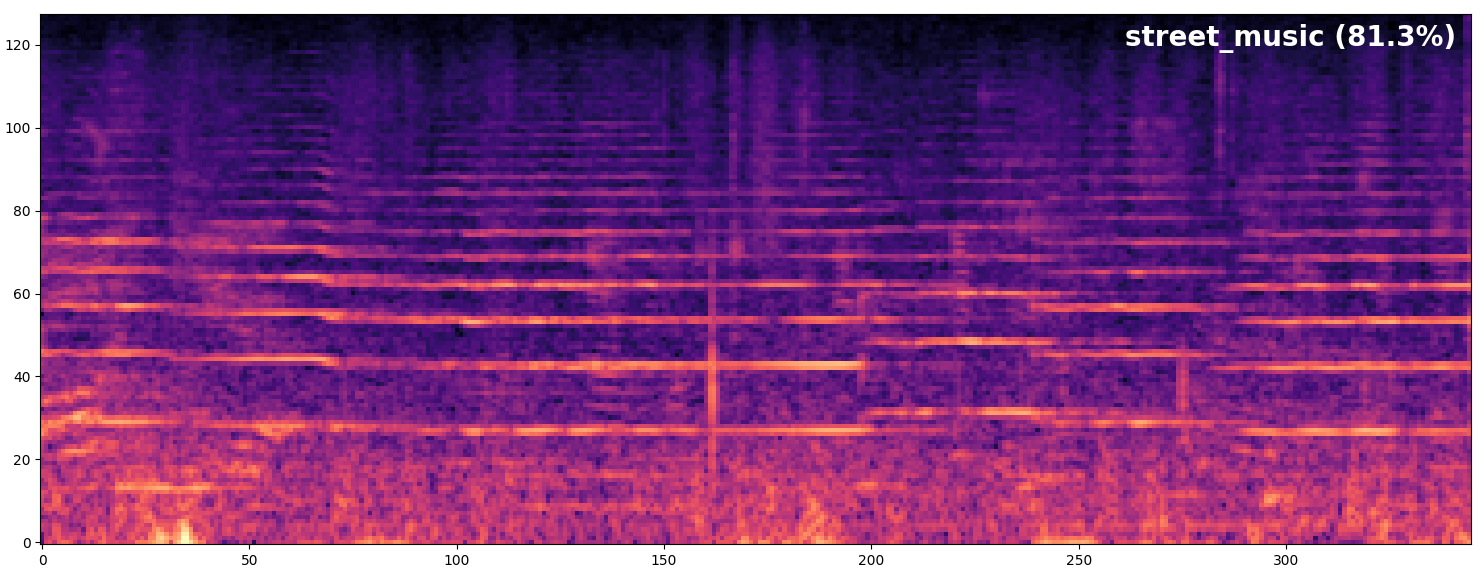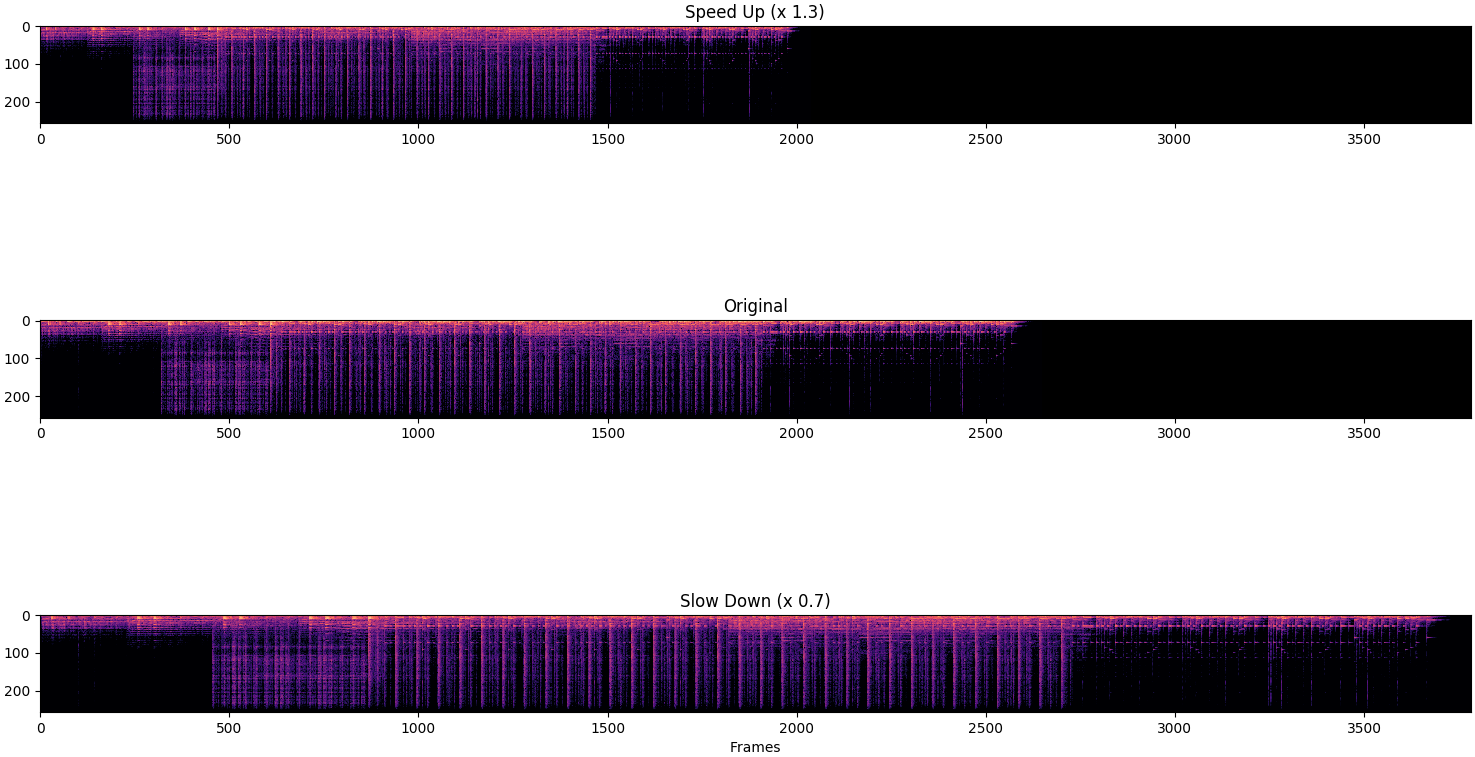ksanjeevan / Crnn Audio Classification
Licence: mit
UrbanSound classification using Convolutional Recurrent Networks in PyTorch
Stars: ✭ 235
Programming Languages
python
139335 projects - #7 most used programming language
Projects that are alternatives of or similar to Crnn Audio Classification
Automatic speech recognition
End-to-end Automatic Speech Recognition for Madarian and English in Tensorflow
Stars: ✭ 2,751 (+1070.64%)
Mutual labels: lstm, rnn, audio
Pytorch Kaldi
pytorch-kaldi is a project for developing state-of-the-art DNN/RNN hybrid speech recognition systems. The DNN part is managed by pytorch, while feature extraction, label computation, and decoding are performed with the kaldi toolkit.
Stars: ✭ 2,097 (+792.34%)
Mutual labels: lstm, rnn
Lstm Music Genre Classification
Music genre classification with LSTM Recurrent Neural Nets in Keras & PyTorch
Stars: ✭ 166 (-29.36%)
Mutual labels: lstm, rnn
Stylenet
A cute multi-layer LSTM that can perform like a human 🎶
Stars: ✭ 187 (-20.43%)
Mutual labels: lstm, rnn
Natural Language Processing With Tensorflow
Natural Language Processing with TensorFlow, published by Packt
Stars: ✭ 222 (-5.53%)
Mutual labels: lstm, rnn
Load forecasting
Load forcasting on Delhi area electric power load using ARIMA, RNN, LSTM and GRU models
Stars: ✭ 160 (-31.91%)
Mutual labels: lstm, rnn
Rnn For Joint Nlu
Pytorch implementation of "Attention-Based Recurrent Neural Network Models for Joint Intent Detection and Slot Filling" (https://arxiv.org/abs/1609.01454)
Stars: ✭ 176 (-25.11%)
Mutual labels: lstm, rnn
Rnnoise
Recurrent neural network for audio noise reduction
Stars: ✭ 2,266 (+864.26%)
Mutual labels: rnn, audio
Chameleon recsys
Source code of CHAMELEON - A Deep Learning Meta-Architecture for News Recommender Systems
Stars: ✭ 202 (-14.04%)
Mutual labels: lstm, rnn
Sign Language Gesture Recognition
Sign Language Gesture Recognition From Video Sequences Using RNN And CNN
Stars: ✭ 214 (-8.94%)
Mutual labels: lstm, rnn
Tensorflow Bitcoin Robot
A Bitcoin trade robot based on Tensorflow LSTM model.Just for fun.
Stars: ✭ 155 (-34.04%)
Mutual labels: lstm, rnn
Rnnvis
A visualization tool for understanding and debugging RNNs
Stars: ✭ 162 (-31.06%)
Mutual labels: lstm, rnn
Audioowl
Fast and simple music and audio analysis using RNN in Python 🕵️♀️ 🥁
Stars: ✭ 151 (-35.74%)
Mutual labels: rnn, audio
Eeg Dl
A Deep Learning library for EEG Tasks (Signals) Classification, based on TensorFlow.
Stars: ✭ 165 (-29.79%)
Mutual labels: lstm, rnn
Speech Denoiser
A speech denoise lv2 plugin based on RNNoise library
Stars: ✭ 220 (-6.38%)
Mutual labels: rnn, audio
Pytorch Image Comp Rnn
PyTorch implementation of Full Resolution Image Compression with Recurrent Neural Networks
Stars: ✭ 146 (-37.87%)
Mutual labels: lstm, rnn
Char Rnn Chinese
Multi-layer Recurrent Neural Networks (LSTM, GRU, RNN) for character-level language models in Torch. Based on code of https://github.com/karpathy/char-rnn. Support Chinese and other things.
Stars: ✭ 192 (-18.3%)
Mutual labels: lstm, rnn
PyTorch Audio Classification: Urban Sounds
Classification of audio with variable length using a CNN + LSTM architecture on the UrbanSound8K dataset.
Example results:
Contents
Dependencies
- soundfile: audio loading
- torchparse: .cfg easy model definition
- pytorch/audio: Audio transforms
Features
- Easily define CRNN in .cfg format
- Spectrogram computation on GPU
- Audio data augmentation: Cropping, White Noise, Time Stretching (using phase vocoder on GPU!)
Models
CRNN architecture:
Printing model defined with torchparse:
AudioCRNN(
(spec): MelspectrogramStretch(num_bands=128, fft_len=2048, norm=spec_whiten, stretch_param=[0.4, 0.4])
(net): ModuleDict(
(convs): Sequential(
(conv2d_0): Conv2d(1, 32, kernel_size=(3, 3), stride=(1, 1), padding=[0, 0])
(batchnorm2d_0): BatchNorm2d(32, eps=1e-05, momentum=0.1, affine=True, track_running_stats=True)
(elu_0): ELU(alpha=1.0)
(maxpool2d_0): MaxPool2d(kernel_size=3, stride=3, padding=0, dilation=1, ceil_mode=False)
(dropout_0): Dropout(p=0.1)
(conv2d_1): Conv2d(32, 64, kernel_size=(3, 3), stride=(1, 1), padding=[0, 0])
(batchnorm2d_1): BatchNorm2d(64, eps=1e-05, momentum=0.1, affine=True, track_running_stats=True)
(elu_1): ELU(alpha=1.0)
(maxpool2d_1): MaxPool2d(kernel_size=4, stride=4, padding=0, dilation=1, ceil_mode=False)
(dropout_1): Dropout(p=0.1)
(conv2d_2): Conv2d(64, 64, kernel_size=(3, 3), stride=(1, 1), padding=[0, 0])
(batchnorm2d_2): BatchNorm2d(64, eps=1e-05, momentum=0.1, affine=True, track_running_stats=True)
(elu_2): ELU(alpha=1.0)
(maxpool2d_2): MaxPool2d(kernel_size=4, stride=4, padding=0, dilation=1, ceil_mode=False)
(dropout_2): Dropout(p=0.1)
)
(recur): LSTM(128, 64, num_layers=2)
(dense): Sequential(
(dropout_3): Dropout(p=0.3)
(batchnorm1d_0): BatchNorm1d(64, eps=1e-05, momentum=0.1, affine=True, track_running_stats=True)
(linear_0): Linear(in_features=64, out_features=10, bias=True)
)
)
)
Trainable parameters: 139786
Usage
Inference
Run inference on an audio file:
./run.py /path/to/audio/file.wav -r path/to/saved/model.pth
Training
./run.py train -c config.json --cfg arch.cfg
Augmentation
Dataset transforms:
Compose(
ProcessChannels(mode=avg)
AdditiveNoise(prob=0.3, sig=0.001, dist_type=normal)
RandomCropLength(prob=0.4, sig=0.25, dist_type=half)
ToTensorAudio()
)
As well as time stretching:
TensorboardX
Evaluation
./run.py eval -r /path/to/saved/model.pth
Then obtain defined metrics:
100%|█████████████████████████████████████████████████████████████████████████████████████████████████| 34/34 [00:03<00:00, 12.68it/s]
{'avg_precision': '0.725', 'avg_recall': '0.719', 'accuracy': '0.804'}
10-Fold Cross Validation
| Arch | Accuracy | AvgPrecision(macro) | AvgRecall(macro) |
|---|---|---|---|
| CNN | 71.0% | 63.4% | 63.5% |
| CRNN | 72.3% | 64.3% | 65.0% |
| CRNN(Bidirectional, Dropout) | 73.5% | 65.5% | 65.8% |
| CRNN(Dropout) | 73.0% | 65.5% | 65.7% |
| CRNN(Bidirectional) | 72.8% | 64.3% | 65.2% |
Per fold metrics CRNN(Bidirectional, Dropout):
| Fold | Accuracy | AvgPrecision(macro) | AvgRecall(macro) |
|---|---|---|---|
| 1 | 73.1% | 65.1% | 66.1% |
| 2 | 80.7% | 69.2% | 68.9% |
| 3 | 62.8% | 57.3% | 57.5% |
| 4 | 73.6% | 65.2% | 64.9% |
| 5 | 78.4% | 70.3% | 71.5% |
| 6 | 73.5% | 65.5% | 65.9% |
| 7 | 74.6% | 67.0% | 66.6% |
| 8 | 66.7% | 62.3% | 61.7% |
| 9 | 71.7% | 60.7% | 62.7% |
| 10 | 79.9% | 72.2% | 71.8% |
To Do
- [ ] commit jupyter notebook dataset exploration
- [x] Switch overt to using pytorch/audio
- [x] use torchaudio-contrib for STFT transforms
- [x] CRNN entirely defined in .cfg
- [x] Some bug in 'infer'
- [x] Run 10-fold Cross Validation
- [x] Switch over to pytorch/audio since the merge
- [ ] Comment things
Note that the project description data, including the texts, logos, images, and/or trademarks,
for each open source project belongs to its rightful owner.
If you wish to add or remove any projects, please contact us at [email protected].





